In photos: ‘Wash Day’ honors a Black hair ritual
“I was having wash day with my kids, and I was looking at their hair,” the photographer Tomesha Faxio, a mother of two daughters, explained to CNN in a video call of her new monograph. “I was just sitting in that moment, and it just dawned on me. Like, oh, wait a minute — this is it. I knew I wanted to showcase our hair in its natural state. I wanted to show the inherent beauty of Black natural hair.”
For Black women and children, wash day is equal parts essential maintenance and self-renewal. In my natural-haired family, our weekly or bi-weekly wash day starts with the gathering of the first set of tools; a wide-toothed comb, two body towels — one that can stand to get wet during the wash, another to wrap hair in afterwards — as well as shampoo, conditioner and deep conditioner. Once the two washes and conditionings have been completed in the kitchen sink, we head to the playroom, where we finger detangle with a product. Depending on if they’re getting braids or not, my husband or I will blow dry our child’s hair on low heat or let it air dry. (We don’t typically do both of our kids’ hair on the same day.) The process takes maybe three hours, but as a whole hinges on the styling that comes after the wash. This can also take hours, making it feel like every bit of a day.
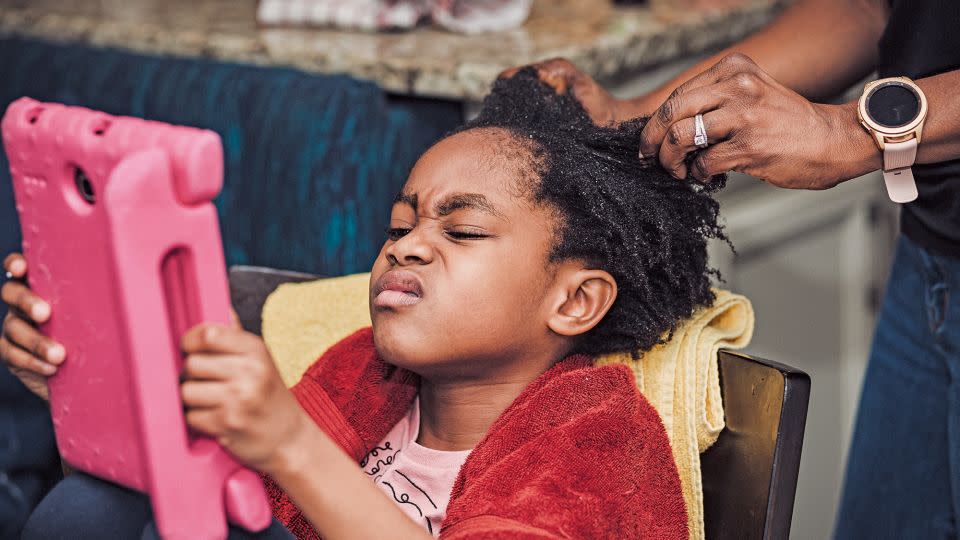
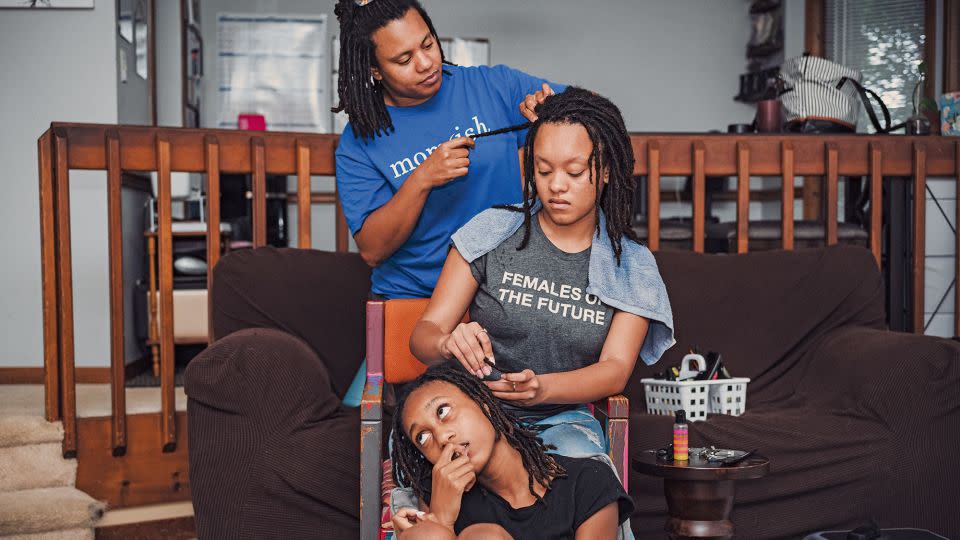
In the series of portraits that make up “Wash Day,” Faxio sat with 26 families and took photos as they went through their distinct routines. Though each family had their own methods — and hair stories, which are shared in texts accompanying Faxio’s photos — the cyclical nature of washings and styling has made the day something that is universally understood, and appreciated, across Black communities.
In her approach, Faxio took a pointed interest in hair as it was, versus how it was to become. “I think that there’s been beautiful work done on our hair portraiture and work that’s been done with the hair styled in all these beautiful, intricate ways,” she explained. “But I hadn’t, at that time, seen a ton of work where the hair was just as is, and that’s what I wanted to capture.”
The natural hair movement, with its first wave coming during the Black Is Beautiful era of the 1970s and the second during the digital revolution, has done their part in easing tensions around kinky, unprocessed hair, but old habits die hard. We talk often, after all, about the obsession with hair being “done” and the intra-communal shame that sometimes comes with natural hair.
Even as the Crown Act, a bill meant to stop hair-based discrimination, reverberates country-wide, the predisposition with how Black hair will be perceived ‘on the job’ — shorthand for by White observers — has fed into racist viewpoints and judgments on the acceptability of certain hairstyles. Faxio is hoping her book can further help foster conversations and encourage people to love their hair as it is.
“So many of us have learned to accept ourselves more fully, and, in turn, are able to teach our children to do the same. We are now more informed about why we grew up thinking our hair was ugly… we can see that that these views are steeped in racism,” she writes in the introduction to “Wash Day.” “While our children will likely continue to contend with non-inclusive beauty standards, we are putting them in a better position to understand and eradicate them.”
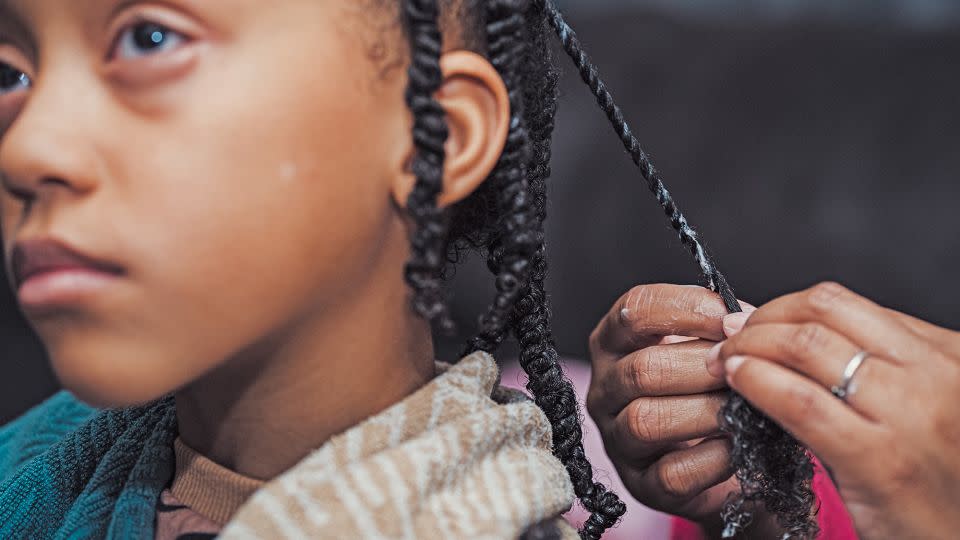
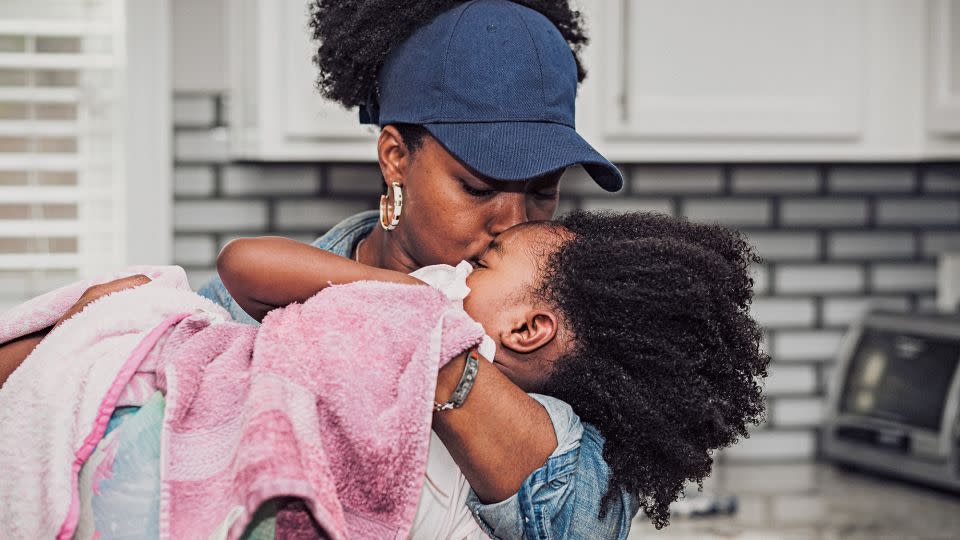
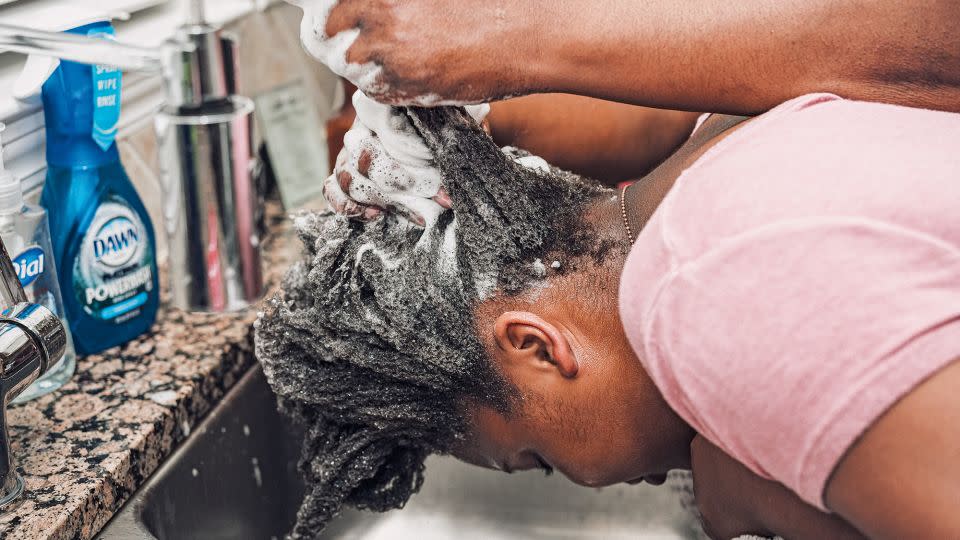
Speaking with Faxio, and engaging with her photobook, reminds me of my own childhood wash days. I had a head full of black, thick hair. Keeping me calm during washings was a task; I was afraid of water and recoiled at the idea of each session, let alone the actual practice. One weekend — my wash days were always on weekends — my mother needed support. She trotted upstairs to a cousin’s apartment, hoping the elders there would help soothe my fears and step in so she wouldn’t have to do it alone. (She was tired of doing things alone.)
There, Mom walked me to the sink, turned the warm water on and started lathering. My aunt and grandmother took turns. I nearly soaked a towel while trying to keep the water from touching my face, but through the fear, I felt cared for. “Calm down. Brooklyn, what if you turn around so your head is facing upward? Right, like that.”
Twenty-five years later, I have a daughter of my own. For us too, wash day is a high energy sport — and it’s also a bonding exercise that neither of us will forget. Therein lies the beauty of the experience.
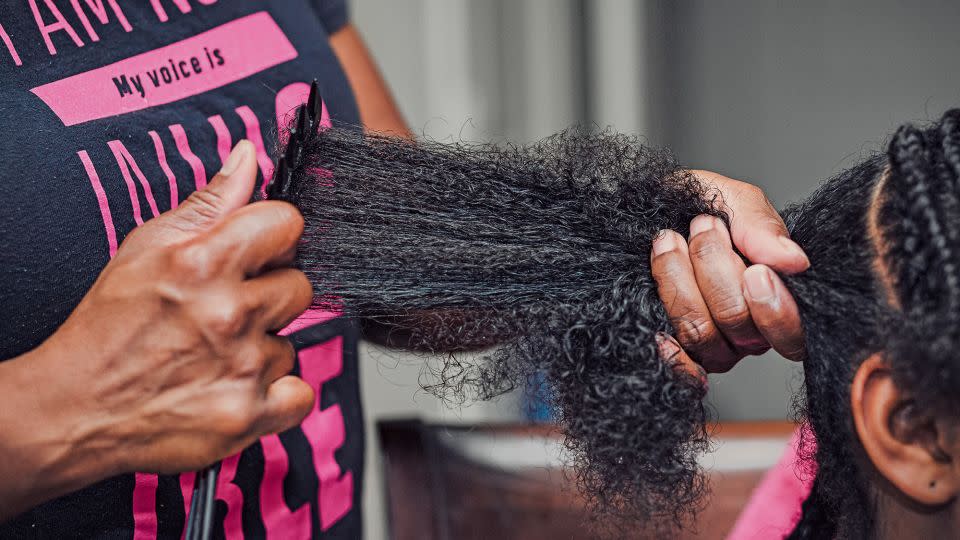
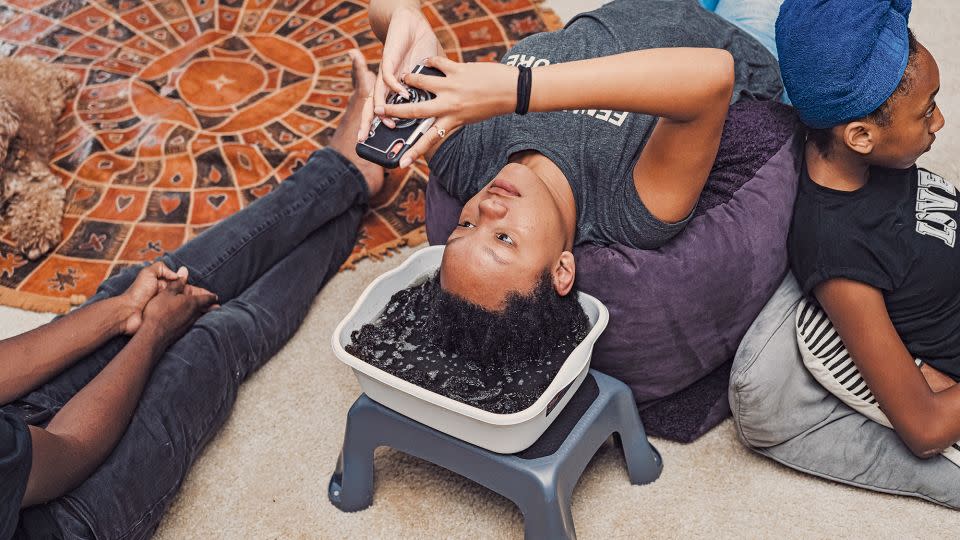
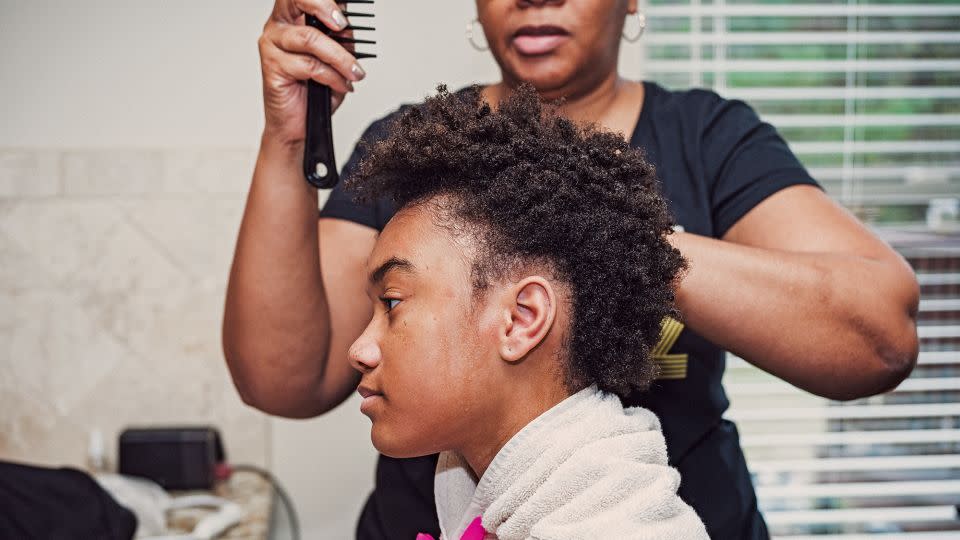
“I learned so much from these moms,” Faxio said. “The greatest thing for me is a renewed love for wash day and renewed sense of value in the process.” Before she set out to write “Wash Day,” she’d try to push back her daughters’ washes because she knew that when it was all said and done, her arms would be sore and she’d want to just melt in bed. Now, though, she welcomes the experience.
“It’s work. But spending time with these moms and thinking about how we are able to pass on love of our hair — an inheritance of pride and joy in our hair, to our kids,” she explained. “It just renewed my love for the process.”
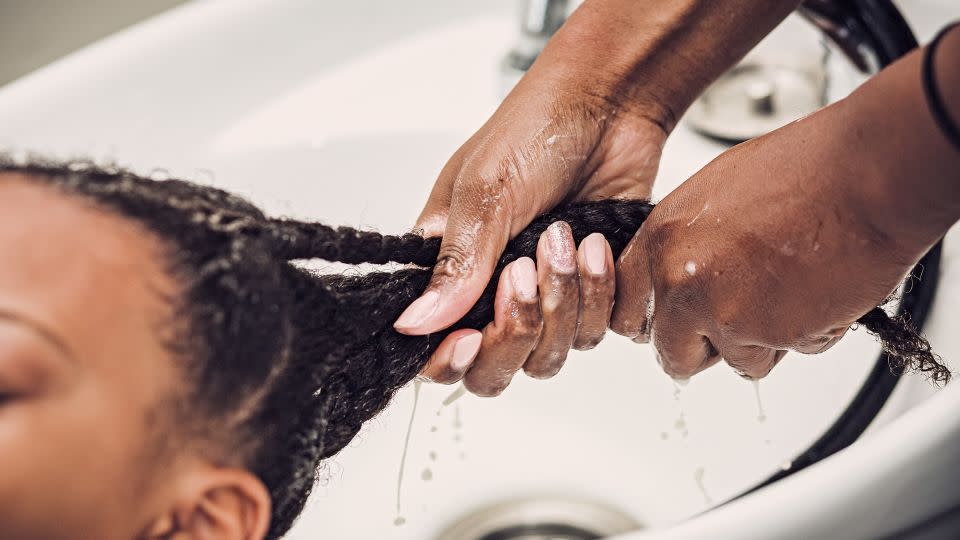
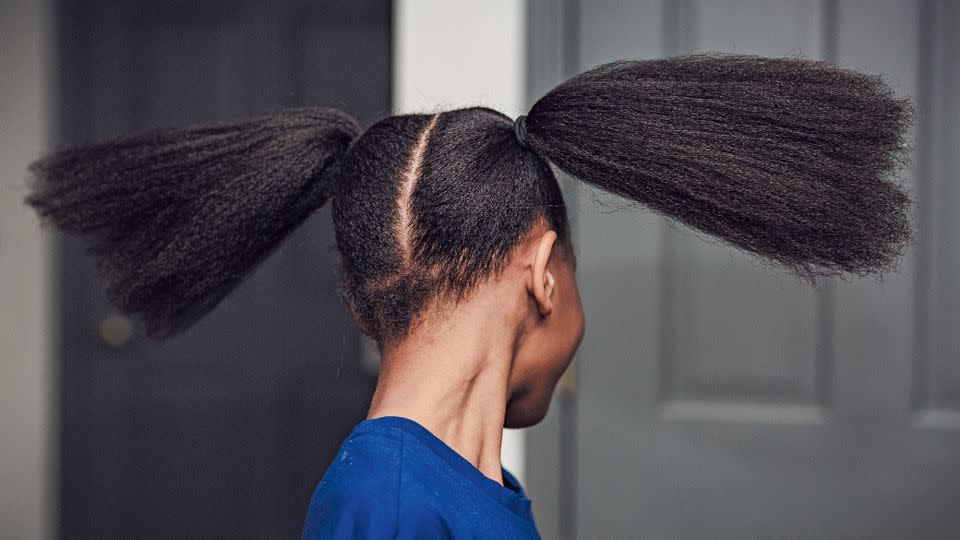
For more CNN news and newsletters create an account at CNN.com

